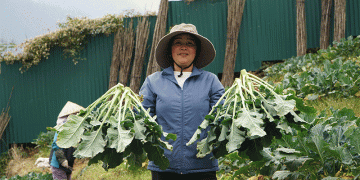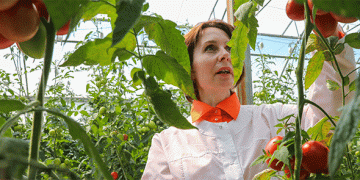The potato, a dietary cornerstone and the world’s fourth most important crop, is increasingly at risk due to climate change. In 2024, European potato farmers encountered an array of challenges, including limited seed availability, elevated input costs, and adverse weather conditions. These factors combined to create a projected 9% decline in production compared to 2023.
Weather Challenges Amplify Production Risks
Farmers across Europe have reported disruptions stemming from prolonged and heavy rainfall during critical planting and growing phases. According to EastFruit.com, the planting season in countries like Belgium and the southern Netherlands stretched over an unprecedented 10 weeks, largely due to persistent downpours.
Key observations from farmers and industry experts include:
- Poor Soil Conditions: Excessive moisture led to compaction and suboptimal planting conditions, especially in Belgium, the Netherlands, and parts of France and Germany.
- Disease Pressure: High humidity created a perfect environment for late blight, one of the most severe threats to potato crops.
- Harvest Delays: Heavy rain during the growing season has left many fields waterlogged, increasing the risk of crop loss.
Robert Strathern, a potato farmer in England, expressed concern about the increasing risk of farming potatoes, telling the BBC:
“Potatoes are now a high-risk crop. The combination of climate unpredictability and financial pressures means many farmers are reconsidering whether they can afford the gamble.”
Food Security and Economic Implications
The effects of reduced potato production ripple far beyond Europe’s fields. The U.S. Environmental Protection Agency (EPA) highlights the link between climate change and global food security, warning that disrupted production cycles can:
- Lower food availability,
- Increase transportation costs, and
- Drive up consumer prices.
As a staple crop, potatoes play a vital role in diets worldwide. A sustained decline in production could lead to significant price hikes, affecting affordability and access for millions of people.
Seeking Solutions Amid Climate Challenges
Innovative farming methods are emerging to address these challenges:
- Disease-Resistant Varieties: Breeding programs are developing potato strains with enhanced resistance to late blight and other climate-sensitive diseases.
- Vertical Farming: Controlled-environment agriculture is gaining traction as a method to minimize exposure to adverse weather and optimize resource use.
- Precision Agriculture: Digital tools, such as moisture sensors and satellite imagery, are helping farmers adapt to erratic weather by providing real-time data for better decision-making.
While these technologies hold promise, widespread adoption will require significant investment and support, particularly for small and medium-scale farmers.
Europe’s potato production challenges in 2024 serve as a stark reminder of the growing impact of climate change on agriculture. The combination of volatile weather patterns, rising input costs, and increased disease pressure threatens not only farmers’ livelihoods but also global food security. Moving forward, addressing these risks will require a combination of innovative farming practices, policy support, and a commitment to sustainability to ensure resilience in the face of climate uncertainty.































